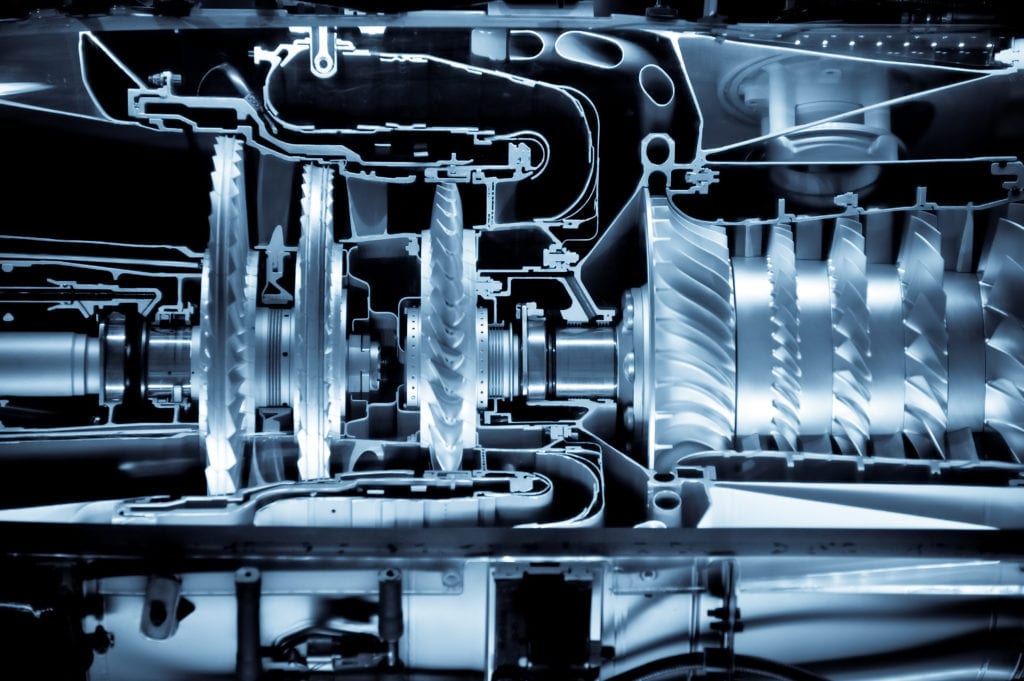
Opportunities in Additive Manufacturing for Civil Aviation Parts Production, 2019-2029
$2,497.50 – $3,497.50
| Select User License | Single User License (one computer), Group User License (Up To Five Computers), Enterprise User License (Unlimited Computers Within Your Organization) |
|---|
Request Excerpt
Chapter One: Flying into AM Parts Production
1.1 Objectives and Methodology of this Report
1.1.1 Defining the Aerospace AM Opportunity
1.1.2 Types of Additive Manufacturing Adopters in the Aerospace Industry
1.1.3 Plan of this Report
1.2 The Promise of Additive Manufacturing for Aerospace Parts and Systems
1.2.1 How is 3D Printing Involved in the Latest Aerospace Production Achievements?
1.2.2 Which 3D Printed Parts Are (or Will Soon Be) Flying?
1.3 Who Is Making AM Happen in Aviation and Aerospace?
1.3.1 AM System OEMs: EOS and SLM Solutions
1.3.2 AM Service Providers from Europe and North America
1.3.3 Aerospace Parts Suppliers Adopting AM
1.3.4 AM Technologies for Aerospace Beyond Metal Powder Bed Fusion
1.3.5 Evolution of Metal Materials for Aerospace Applications Beyond Titanium
1.3.6 Evolution of Polymer and Composite Materials for Aerospace Applications Beyond PEEK and ULTEM
1.4 Assessing the Size of the Overall Aerospace Additive Manufacturing Opportunity
1.4.1 How Big Is the Reference Civil Aviation Market for AM?
1.4.2 How Important is the Aerospace Market for AM?
1.5 A SWOT Analysis for Investing in AM for Aviation Part Production
1.6 Key Points from This Chapter
Chapter Two: How Additive Manufacturing Technologies and Materials are Evolving to Meet Aerospace Production Demands
2.1 Evolution of AM Hardware as Aircraft Production Machines
2.2 Production Capabilities in AM Hardware Systems
2.2.1 Metal Powder Bed Fusion
2.2.1.1 Electron Beam Metal Powder Bed Fusion
2.2.1.2 Laser Metal Powder Bed Fusion
2.2.2 Directed Energy Deposition Technologies
2.2.2.1 Repair and Feature Addition Applications for DED
2.2.2.2 Near-net-shape Parts
2.2.3 Metal Binder Jetting and Bound Metal Printing Technologies
2.2.3.1 Bound Metal Printing Creating Strong Link Between AM and Powder Metallurgy Industry
2.2.3.2 Major Competitive Growth in Bound Metal Printing in 2020
2.2.3.3 Industrialization of Metal Binder Jetting Following in the Footsteps of Powder Bed Fusion
2.2.4 Other Relevant Metal AM Technologies
2.2.4.1 Kinetic Consolidation (Cold Blown Powder)
2.2.4.2 Ultrasound Consolidation
2.2.5 Polymer and Composite Technologies for Aerospace Production
2.2.5.1 Thermoplastic Filament Extrusion
2.2.5.2 Composite Pellet Extrusion
2.2.5.3 Thermoplastic Powder Bed Fusion
2.3 AM Factories and AM Automation for Civil Aviation Part Production
2.3.1 Automating the Direct AM End-to-end Process
2.3.2 Indirect Production Workflows Integrating AM Processes as a Key Intermediate Step
2.3.2.1 Immediate Benefits of 3D Printing Molds and Casts
2.3.3 Automated AM Factory Concepts and How they Apply to Civil Aviation Additive Manufacturing
2.3.3.1 Metal Powder Bed Fusion Factories
2.3.3.2 Metal and Sand Binder Jetting Factories
2.3.3.3 Polymer Additive Manufacturing Factories
2.4 Ten-year Forecast of AM Hardware Sales in Civil Aviation
2.4.1 Ten-year Metal Hardware Sales in Civil Aviation
2.4.2 Polymer and Composite Hardware Sales in Civil Aviation
2.5 Key Points from This Chapter
Chapter Three: Metals vs. Polymers in the Air
3.1 Metal AM Material Opportunities in Civil Aviation Applications
3.1.1 Metal Materials for Civil Aviation AM
3.1.1.1 Key Facts About Titanium Alloys
3.1.1.2 Key Facts About Nickel Alloys
3.1.1.3 Key Facts About Aluminum
3.1.1.4 Key Facts About Steels
3.1.1.5 Key Facts About Copper
3.1.2 Metal AM Material Suppliers for Civil Aviation Industry Applications
3.1.2.1 AP&C
3.1.2.2 Carpenter
3.1.2.3 Sandvik
3.1.2.4 Höganäs
3.1.2.5 Praxair Surface Technologies
3.1.2.6 Heraeus
3.1.2.7 Oerlikon
3.1.3 Relevant Partnerships and Acquisitions
3.2 Polymer and Composite Materials for Aerospace Additive Manufacturing
3.2.1 Polymer AM Material Suppliers for Civil Aviation Industry Applications
3.2.1.1 Key Composite Materials Suppliers
3.2.1.2 Key PAEK Polymers Suppliers
3.3 Ceramics
3.4 Ten-year Forecast of Materials Sales in Civil Aviation
3.4.1 Ten-year Forecast of Metal Materials Sales in Civil Aviation
3.4.2 Ten-year Forecast of Polymer and Composite Materials Sales in Civil Aviation
3.5 Key Points from This Chapter
Chapter Four: Influential Aircraft AM Parts Suppliers in a Changing Supply Chain
4.1 From AM Services to Aerospace AM Parts Providers
4.1.1 Early Role of Metal AM Service Bureaus in the Aerospace Industry
4.1.2 Success Factors for AM Metal Services in the Aerospace Industry
4.2 Prominent AM Service Bureaus Producing Aircraft Parts
4.2.1 Additional Insights on Key AM Service Providers to the Aviation Industry
4.3 Prominent Aircraft Parts Manufacturers Adopting Additive Manufacturing
4.4 Notable Activities with AM by Airline MROs (Insourcing)
4.5 Forecast for AM Service Revenues in Civil Aviation
4.5.1 Forecasts by Part Type
4.5.2 Forecast by Supplier Type
4.6 Key Points from This Chapter
Chapter Five: Flying Additively Manufactured Aircraft Parts
5.1 Types of AM Parts in Civil Aviation
5.2 Evolving Polymer Part Production Opportunities
5.2.1 Rise of Composite Materials and Technologies for Large Aircraft Parts
5.3 Understanding the Additive Manufacturing Value Proposition for Aircraft Parts Manufacturers
5.3.1 Moving into Simpler and Smaller Serial Parts
5.3.2 Moving into Systems
5.4 Certifications and Standards
5.4.1 Relevant Standards for AM
5.4.2 Known Standards Currently Used by Civil Aviation AM Operators
5.4.3 Relevant Certifying Organizations for Aviation AM
5.4.4 Guidelines for Metal AM Part Certification
5.5 Ten-year Forecast and Analysis of Additively Manufactured Aircraft Parts in Civil Aviation
5.6 Key Points from this Chapter
About SmarTech Analysis
About the Analyst
Acronyms and Abbreviations Used In this Report
List of Exhibits
Exhibit 1-1: Estimated Forecasted Revenues from Aircraft Parts ($USM) 2019 – 2029 and Expected Value of AM Part Revenues
Exhibit 1-2: Size of the Overall AM Opportunity (Bottom Up Analysis)
Exhibit 1-3: Comparison of Top Down and Bottom Up Analysis
Exhibit 1-4: Expected Year on Year Revenue Growth Rates for AM in Civil Aviation 2019 – 2029
Exhibit 1-5: Expected CAGR for AM in Civil Aviation Revenues by Market Segment
Exhibit 1-6: Total Primary Metal AM Opportunities Market Forecast, by End- User Segment, all Powder Metal AM Technologies, 2018-2029
Exhibit 1-7: A SWOT Analysis of AM in Aviation Applications
Exhibit 2-1: The Road to AM Industrialization in Civil Aviation, from R&D to Digital Factories
Exhibit 2-2: Leading AM Technologies Used in Civil Aviation Part Production
Exhibit 2-3: Opportunities for Directed Energy Deposition in Commercial Aviation
Exhibit 2-4: EOS P 810 Automated Workflow Production Solution for Composite Parts
Exhibit 2-5: Metal AM Hardware System Unit Demand in Civil Aviation
Exhibit 2-6: Metal AM Hardware System Revenues in Civil Aviation
Exhibit 2-7: Expected YoY Revenue Growth Rate for Metal AM Hardware Sales in Civil Aviation 2019 – 2029
Exhibit 2-8: Expected CAGR by Metal AM Hardware Segment in Civil Aviation
Exhibit 2-9: Polymer AM Hardware System Unit Demand in Civil Aviation
Exhibit 2-10: Composite AM Hardware System Revenues in Civil Aviation
Exhibit 2-11: Polymer and Composite AM Hardware System Revenues in Civil Aviation
Exhibit 2-12: Expected YoY Revenue Growth Rate for Polymer and Composite AM Hardware Sales in Civil Aviation 2019 – 2029
Exhibit 2-13: Expected CAGR by Polymer and Composite AM Hardware Segment in Civil Aviation
Exhibit 3-1: Comparison in Metal AM Powder Demand within AM Adoption Segments
Exhibit 3-2: Comparison Between Metal and Polymer Materials Demand in Civil Aviation AM 2019 – 2029
Exhibit 3-3: Metal AM Powder Materials Demand in Civil Aviation in Metric Tonnes by Material Type 2019 – 2029
Exhibit 3-4: Metal AM Powder Materials Revenues ($USM) in Civil Aviation in Metric Tonnes by Material Type 2019 – 2029
Exhibit 3-5: Expected Year on Year Growth Rate for Metal AM Materials Revenues in Civil Aviation 2019 – 2029
Exhibit 3-6: Expected CAGR by Metal Material Revenue Segment in Civil Aviation
Exhibit 3-7: Extrusion Thermoplastic Materials Demand in Civil Aviation in Metric Tonnes by Material Type 2019 – 2029
Exhibit 3-8: Extrusion Thermoplastic Materials Revenues ($USM) in Civil Aviation by Material Type 2019 – 2029
Exhibit 3-9: Photopolymer Materials Demand in Civil Aviation in Metric Tonnes by Material Type 2019 – 2029
Exhibit 3-10: Photopolymer Materials Revenues ($USM) in Civil Aviation by Material Type 2019 – 2029
Exhibit 3-11: Thermoplastic Powder Materials Demand in Civil Aviation in Metric Tonnes by Material Type 2019 – 2029
Exhibit 3-12: Thermoplastic Powder Materials Revenues ($USM) in Civil Aviation by Material Type 2019 – 2029
Exhibit 4-1: AM Service Bureaus Supplying Parts into the Civil Aviation Industry
Exhibit 4-2: Aerospace Parts Providers (Tier 2 Suppliers)
Exhibit 4-3: Revenues from Polymer AM Service Bureaus by Application Type ($USM) 2019 – 2029
Exhibit 4-4: Revenues from Metal AM Service Bureaus by Application Type ($USM) 2019 – 2029
Exhibit 4-5: Trend for AM Service Bureau Revenues by Application Type (Polymer and Metal) 2019 – 2029
Exhibit 4-6: AM Part Production in the Aviation Industry by Supplier Type
Exhibit 4-7: Number of Metal AM Parts by Supplier Type 2019 – 2029
Exhibit 4-8: Polymer AM Parts Produce by Type of Supplier
Exhibit 5-1: Relevant Application Cases for AM in Civil Aviation*
Exhibit 5-2: Evolution in Polymer 3D Printing Applications in Aerospace
Exhibit 5-3: Average Weight of AM Parts for Civil Aviation by Material
Exhibit 5-4: Average Price for Aviation 3D Printed End-use Parts by Material and Part Type
Exhibit 5-5: AM End-use Parts Revenues ($USM) in Civil Aviation by Material Type and YoY Growth
The opportunities in additive manufacturing for civil aviation parts production are beyond question. The number of application cases leveraging AM’s value proposition continues to expand, increasingly driven by some of the largest aviation part suppliers, including GE Aviation, MTU, Rolls Royce, Safran and others. By choosing to adopt AM, tier 1 suppliers have increased pressure on all other suppliers to do the same. Many of them are now rising to challenge, widening the number of AM adopters in the industry as well as the number of tested applications.
This report identifies and assesses the business potential of these trends, in light of the latest developments for additive manufacturing in aviation, focusing exclusively on end-use part production (for tools and final parts). The report includes:
-
- Detailed ten-year forecasts of the revenue generation potential for additive manufacturing hardware, materials and services in the civil aviation sector. These forecasts are presented in both volume and value ($ Millions) terms and cover printer shipments and install base, revenues from specialist aerospace service bureaus, aerospace-related AM software, and materials (metals, polymers and composites).
-
- A detailed ten-year forecast of end-use part production, including detailed part-specific forecast supported by dozens of relevant application cases.
-
- A strategic assessment of the leading firms supplying the “additive aerospace” sector. These are divided into airline MROs (insourcing) and major aircraft frame builders, tier 1 (engine builders) and tier 2 aviation parts suppliers, AM service bureaus
-
- An analysis of how this segment of the aerospace industry is changing its strategies and adoption patterns for metal AM and is exploiting the improvements that have occurred in the last few years primarily focusing on process automation.
The aerospace segment has seen larger than ever before investments in AM hardware and materials and these trends continue to indicate that the market for AM in commercial and general aviation is still only at the very beginning of its potential growth curve.
This report is based on extensive interviews in the “additive aerospace” sector as well as on SmarTech’s extensive database of information and proprietary market forecasts in this space. The report will be highly valuable to marketing, business development and production executives at 3D printer makers, AM material companies, specialist service bureau, as well as within the aerospace industry itself.

